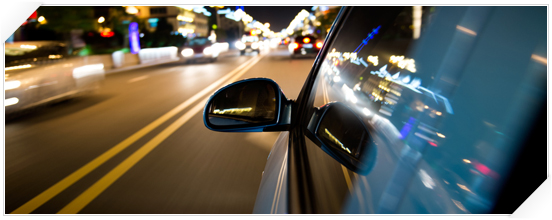Night driving poses some special challenges and surprises. Knowing what to look out for and how to deal with the dark can help ensure your safety on the road after sundown.
According to the nonprofit National Safety Council (NSC), night driving accounts for three times as many traffic-related deaths as driving during the day. Know the difficulties involved with night driving and help prepare for them with these nighttime driving tips.
1. Get plenty of rest. According to the Centers for Disease Control and Prevention (CDC), some studies estimate that 15 to 33 percent of fatal crashes involve drowsy drivers. With drowsy-driving accidents, fatalities and injuries are more likely to occur than in crashes where the driver is alert. The CDC advises that tricks designed to keep you alert — rolling down the window or blasting music — are ineffective. If you’re tired, you’ll need to find a place to safely stop and get some rest.
2. Time to react. Drivers should provide at least three seconds of leeway for cars in front of them at night — and more during inclement weather. When the car in front of you passes a landmark, it should take you three seconds before you pass the same point. If not, slow your speed to leave more room between the two cars. John Ulczycki, vice president of strategic initiatives at NSC, says to actively scan the road ahead for potential danger. In neighborhoods, bicyclists or children might run into the road, and on the highway, cars in front of you can make sudden stops.
3. Teen education. According to the Insurance Institute for Highway Safety, per mile driven, the chances of a 16 to 19-year-old being involved in a fatal crash is four times higher at night than during the day. Young, inexperienced drivers often lack the savvy to deal with difficult situations. Ulczycki recommends educating your teen driver about driving safely at night. You can use Liberty Mutual’s Parent/Teen Contract to start the conversation.
4. Headlight know-how. When faced with another vehicle’s high beams, keep your eyes on the right edge of the road to guide you. Adjust your rearview mirror to avoid the glare from high beams from the vehicles behind you. To be courteous and safe, don’t use high beams with oncoming traffic or when behind another vehicle.
Recognizing hazards specific to night driving and making the necessary adjustments can help keep you and others safe on the roads when the sun’s down.

Night Driving
by
Tags:

Leave a Reply